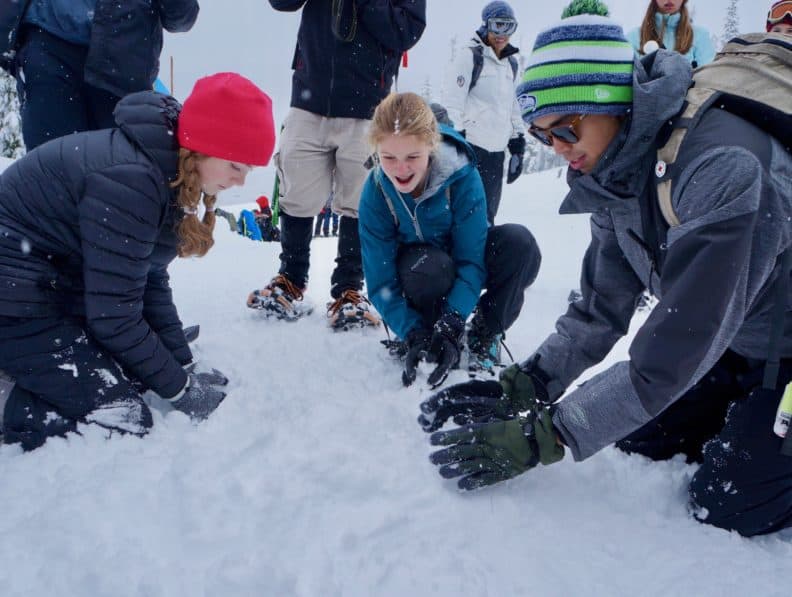
Snow School: Where Science Meets Winter
I love the anticipation of winter—the ski-film fests, the patrol fundraisers, the dusting of snow on ridges. But at this moment, hoping for snow so I can ski powder seems pretty darn trivial. Luckily, something more meaningful is behind that wish.
Mt. Baker Snow School is where powder day perma-grin and “we can make a difference” warm fuzzies intersect. We don’t have control over freezing levels, precipitation amounts or high-pressure systems, but we can effect change in ourselves and in others by learning, teaching and taking action.
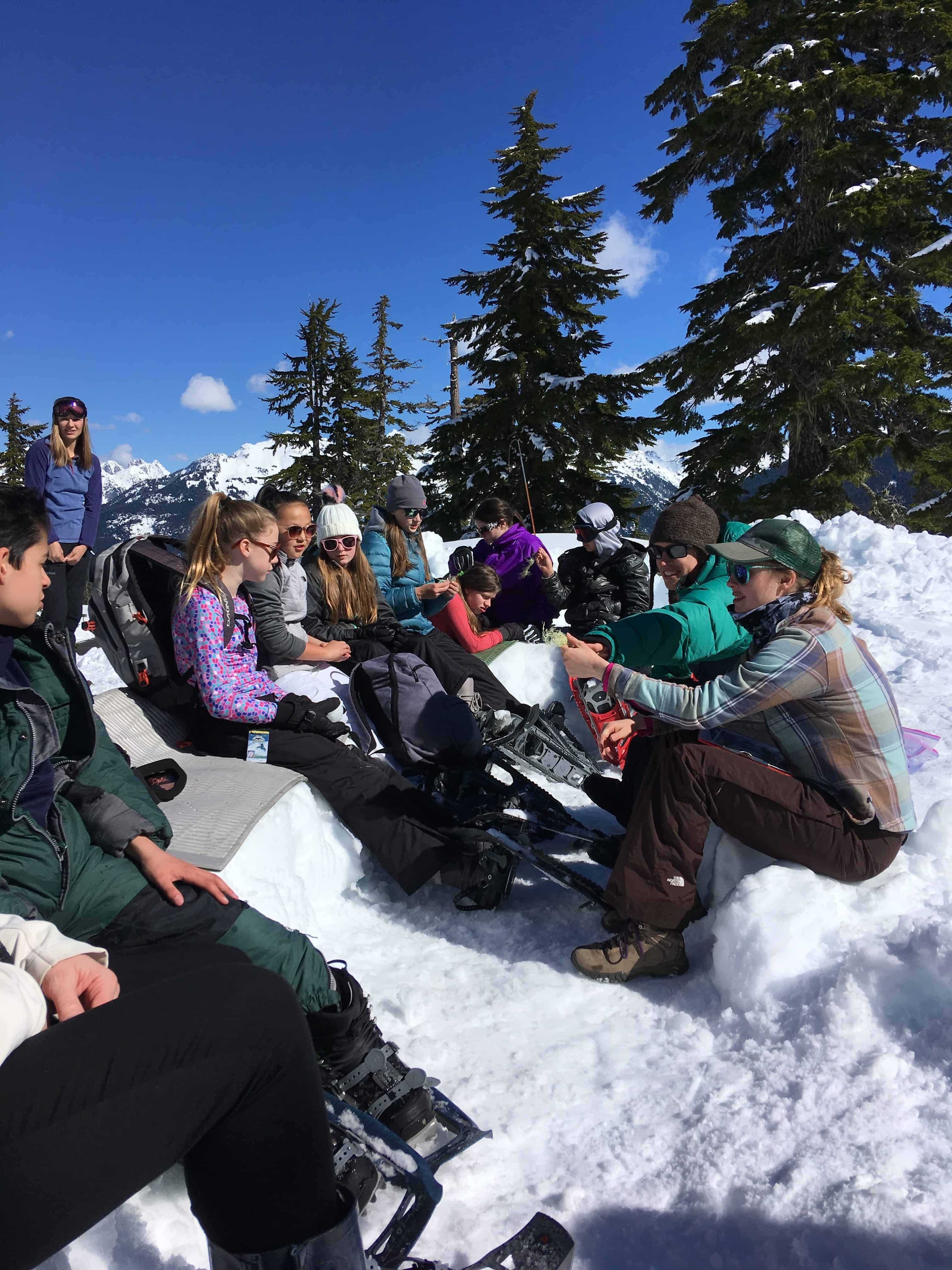
Since 2014, North Cascades Institute has led a collaborative effort to introduce young people to the winter mountain environment. From recruiting and training volunteer instructors, providing pre-trip classroom orientations and coordinating fundraising efforts for much-needed winter gear, Institute staff has grown Snow School to reach more than 550 middle school students each winter season. Whether from La Conner near the mouth of the Skagit, or Mt. Baker Junior High on the banks of the Nooksack, students strap on snowshoes and learn about their watershed at the beginning.
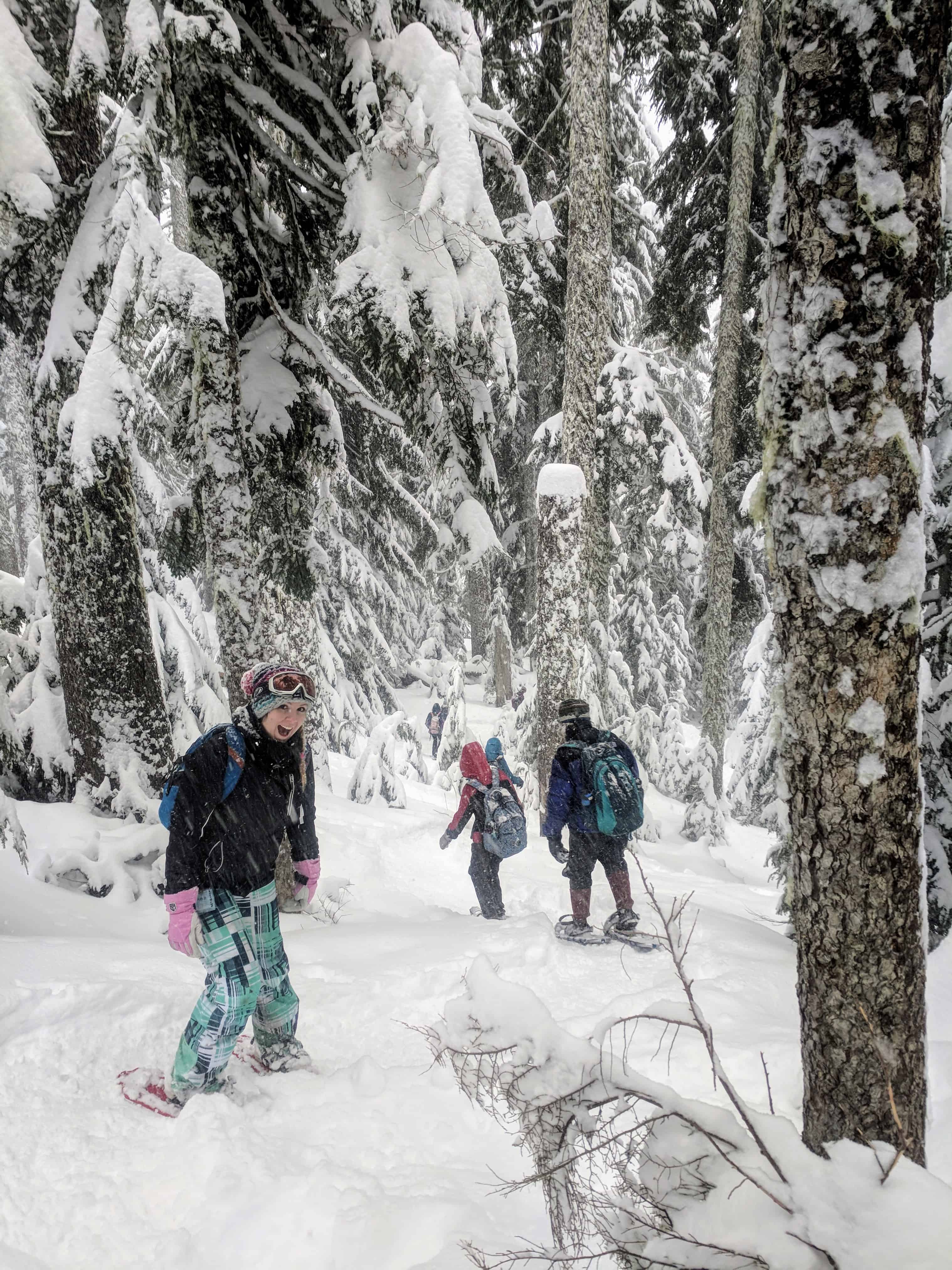
Institute trained volunteer instructors guide learning groups through active lessons that highlight the ways in which snowpack relates to our watershed and the health of everything in it. Whether collecting snow algae for Western Washington University’s Living Snow Project, analyzing a snow pit with forecasters from Northwest Avalanche Center, or using movement to model the formation of a snowflake, Mt. Baker Snow School broadens understanding of the place we call home. As one of 60 national snow science programs endorsed by Winter Wildlands Alliance, Snow School brings climate science into the hands of young people.
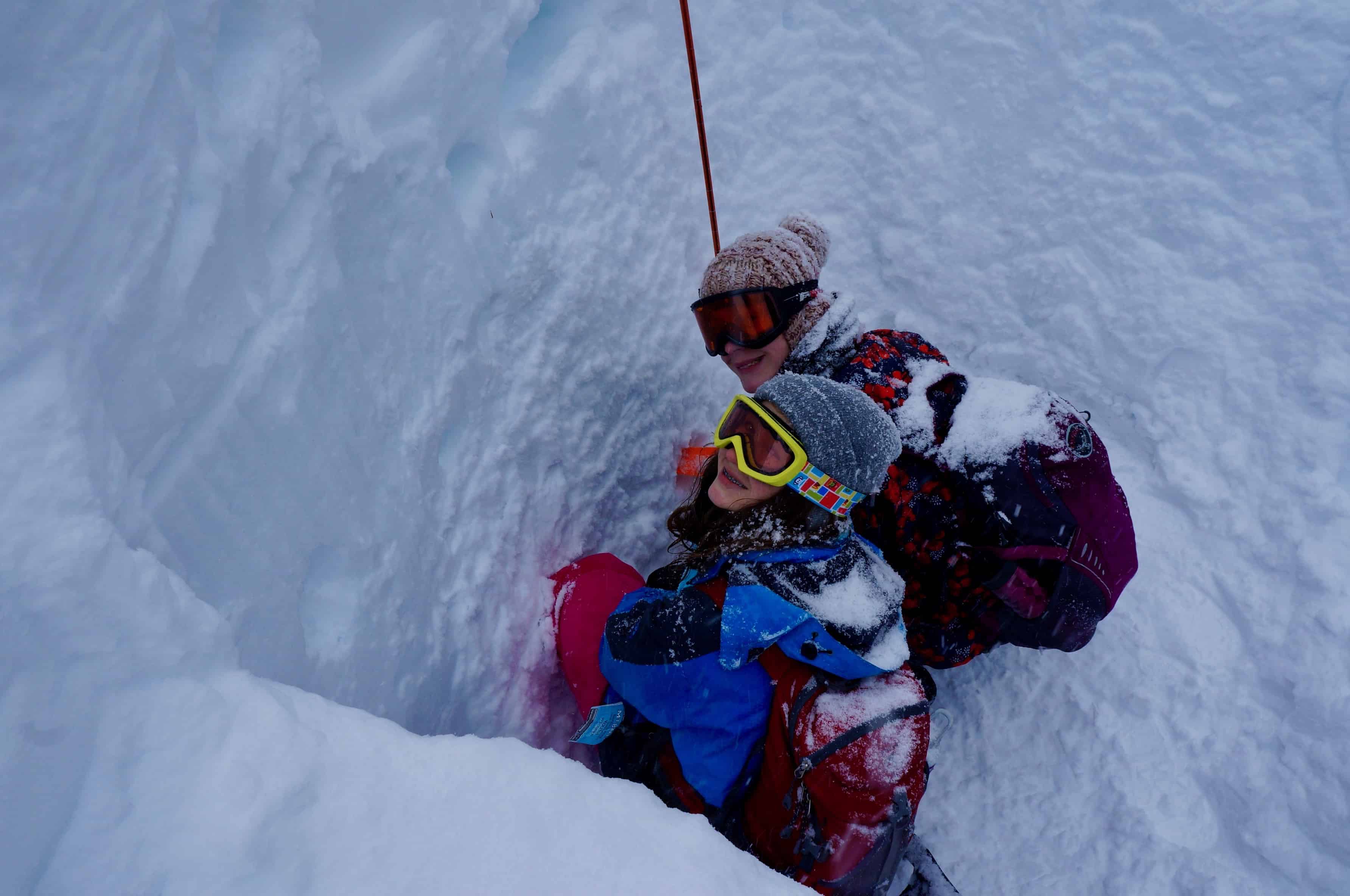
Eric Henry, an eighth grade science teacher at Mt. Baker Junior High, ushers his students up the hill every year. “Most of our students live along the Mt. Baker Highway,” he says. “In spite of this..
Nearly half of our students have never seen Artist’s Point, played at the ski area, or hiked the trails. Working with inspiring instructors doing hands-on experiments enhance their academic experience and instill connection to their natural world.”
The program is a multifaceted educational experience. While middle school students learn about snow science, instructors gain deeper knowledge of content, skills to be more effective youth leaders, and strategies for keeping young people safe in a winter environment. By providing “transformative educational experiences” to participants at all levels, the Institute upholds its mission to “inspire and empower environmental stewardship”. By putting instruments like black carbon filters, snow depth probes and thermometers into the hands of young people, the Institute provides them with tools to make informed decisions about the nature of our changing climate.
Jasmine Vilar, a 2018 Snow School instructor and current mentor with Wild Whatcom says, “Being an instructor gave me the opportunity to gain experience in environmental education. Working with kids to facilitate a connection to nature is so rewarding.”
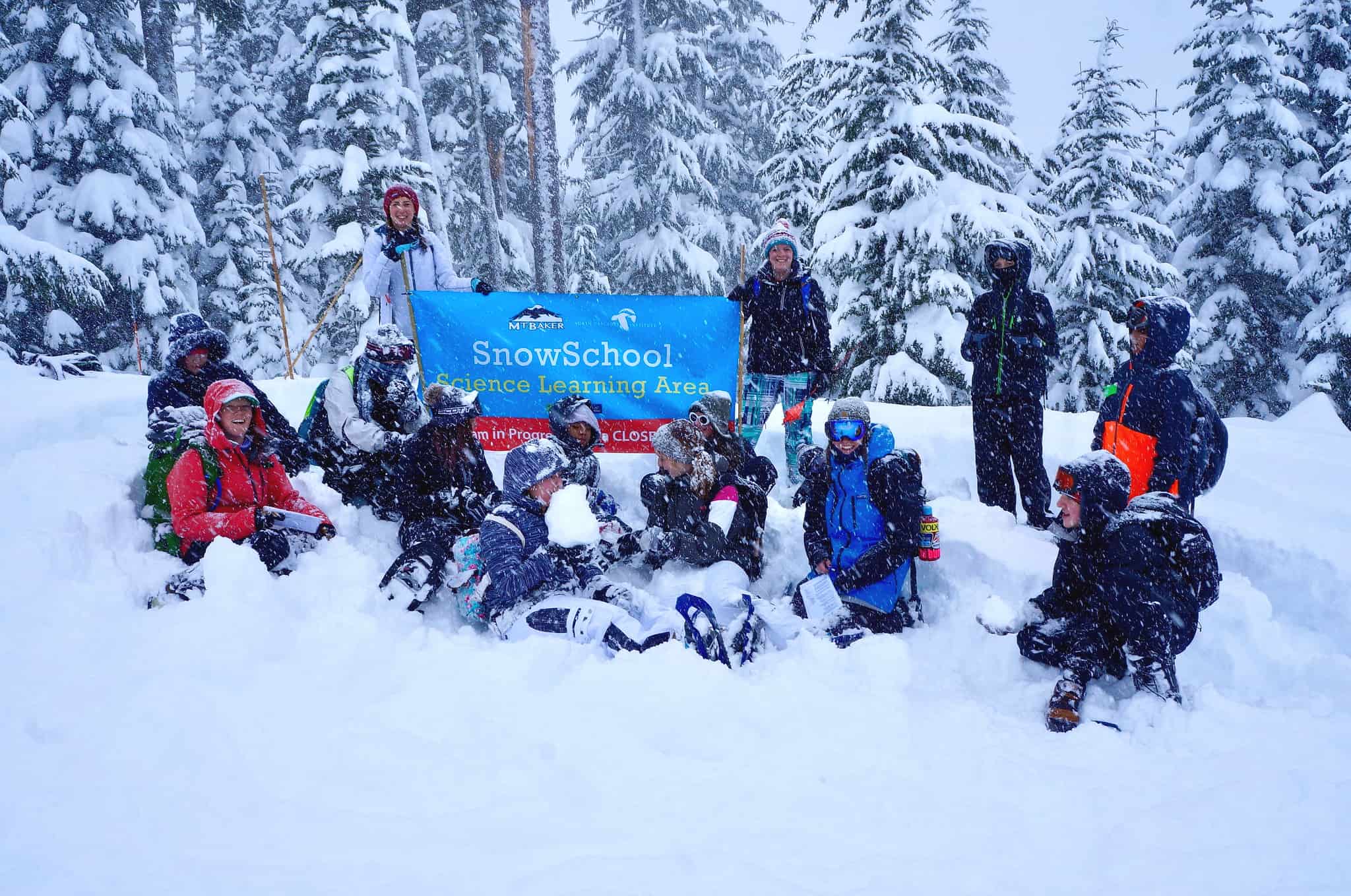
Waiting for the right atmospheric conditions to fill up our snow savings account can be a agonizing. But Mt. Baker Snow School provides a new perspective. Teaching kids about climate science isn’t the same as first chair on a big day, but it is consequential. And who can’t use a little more of that right now?
Check out more pictures from Mt. Baker Snow School 2018 Season on our Flickr page!

